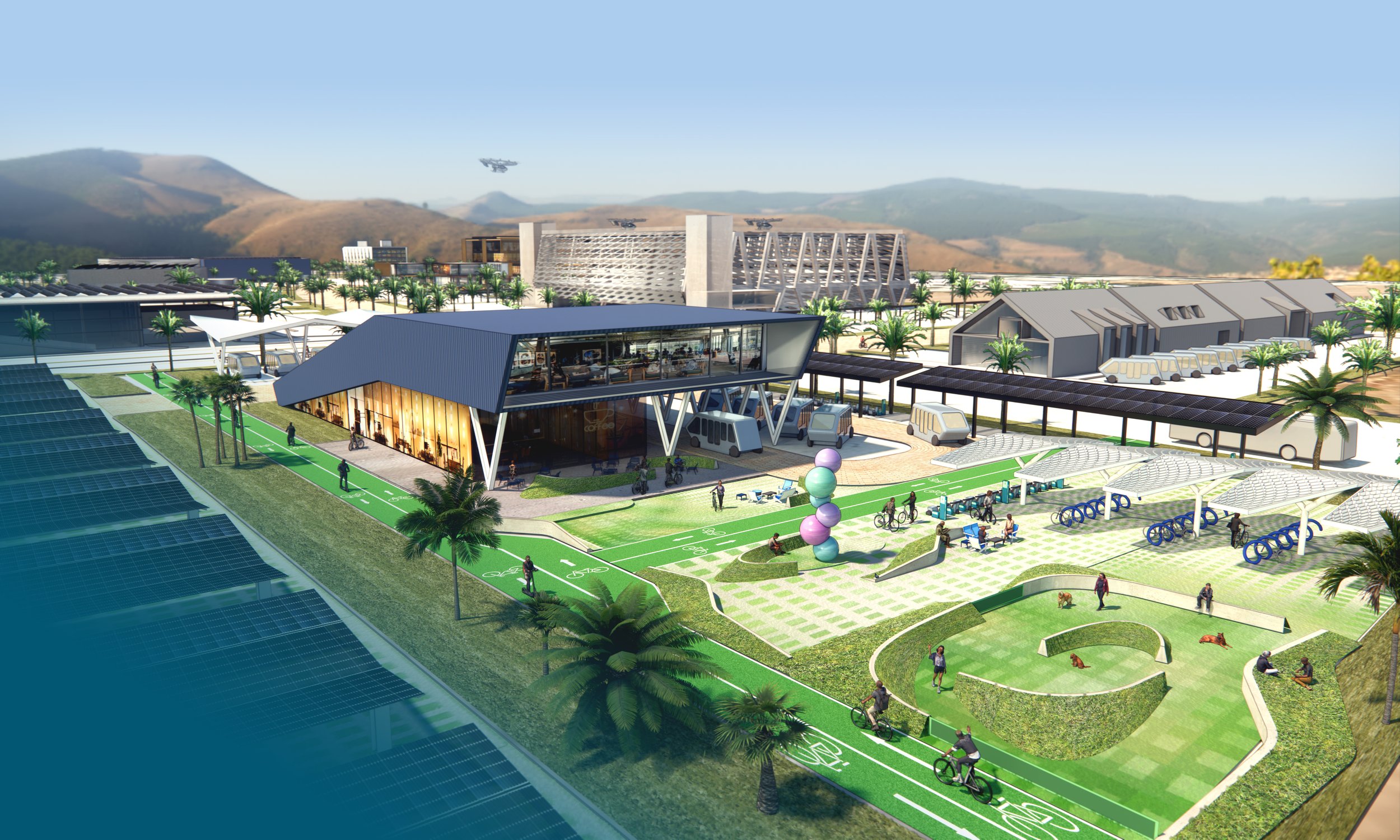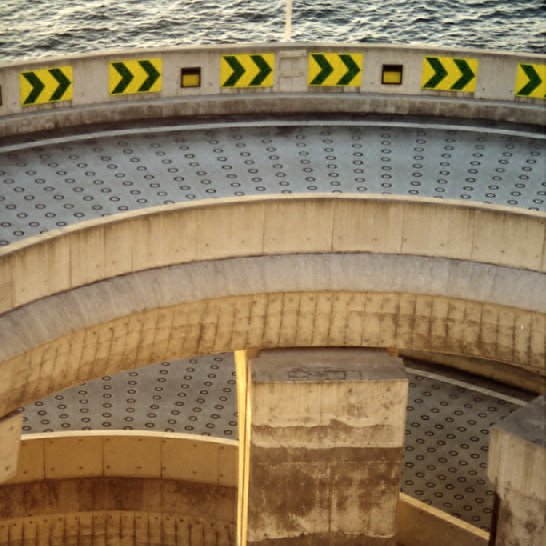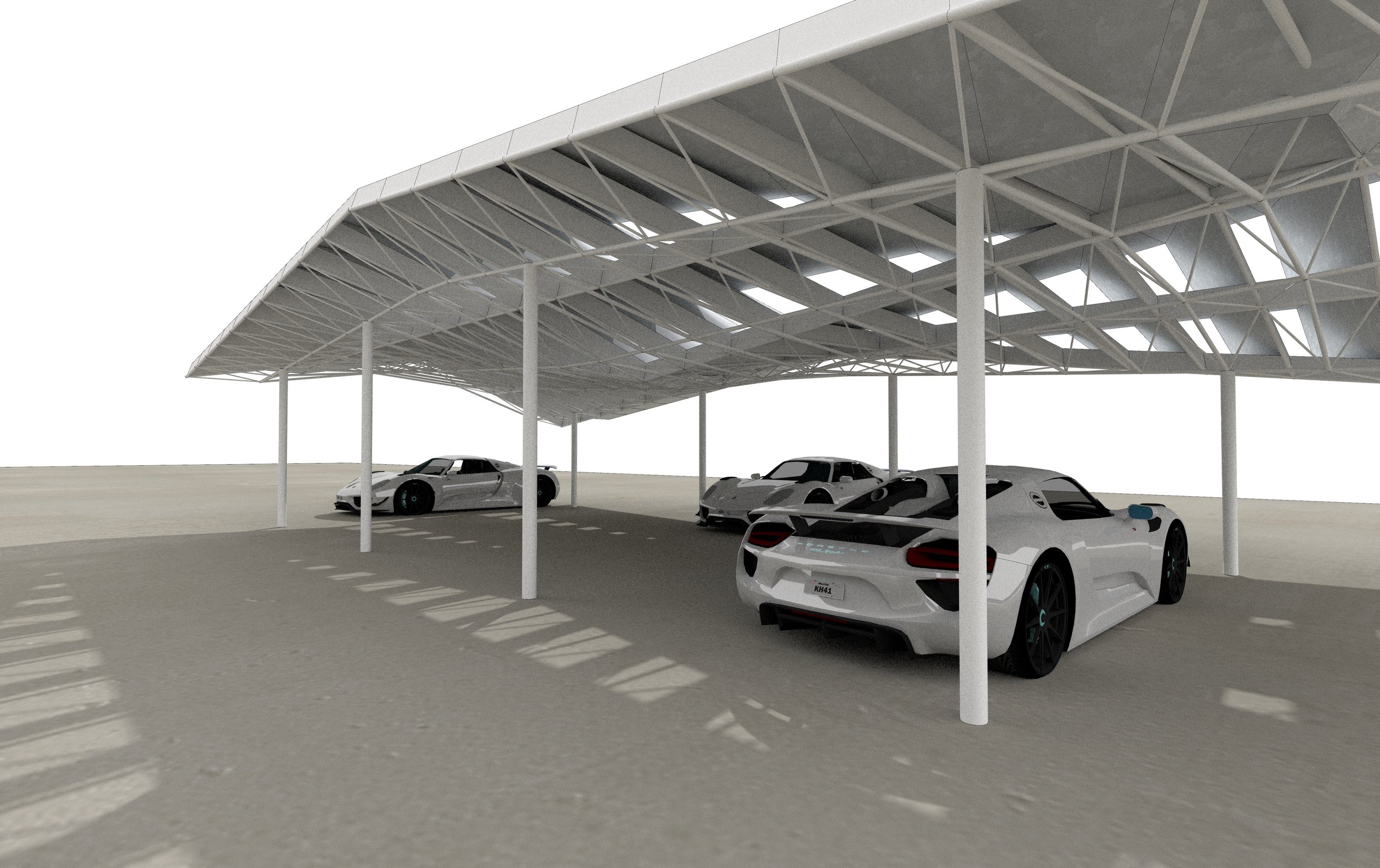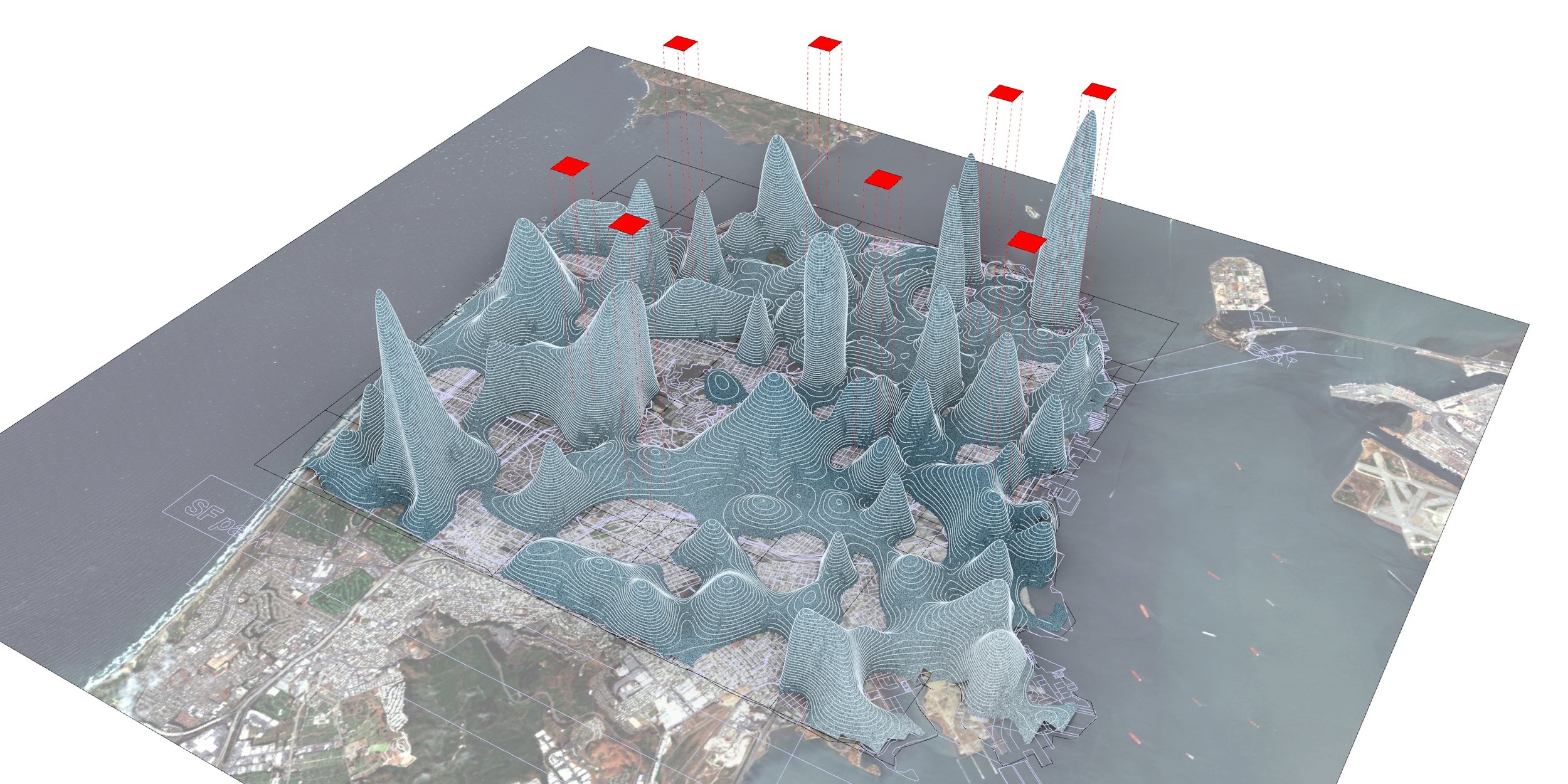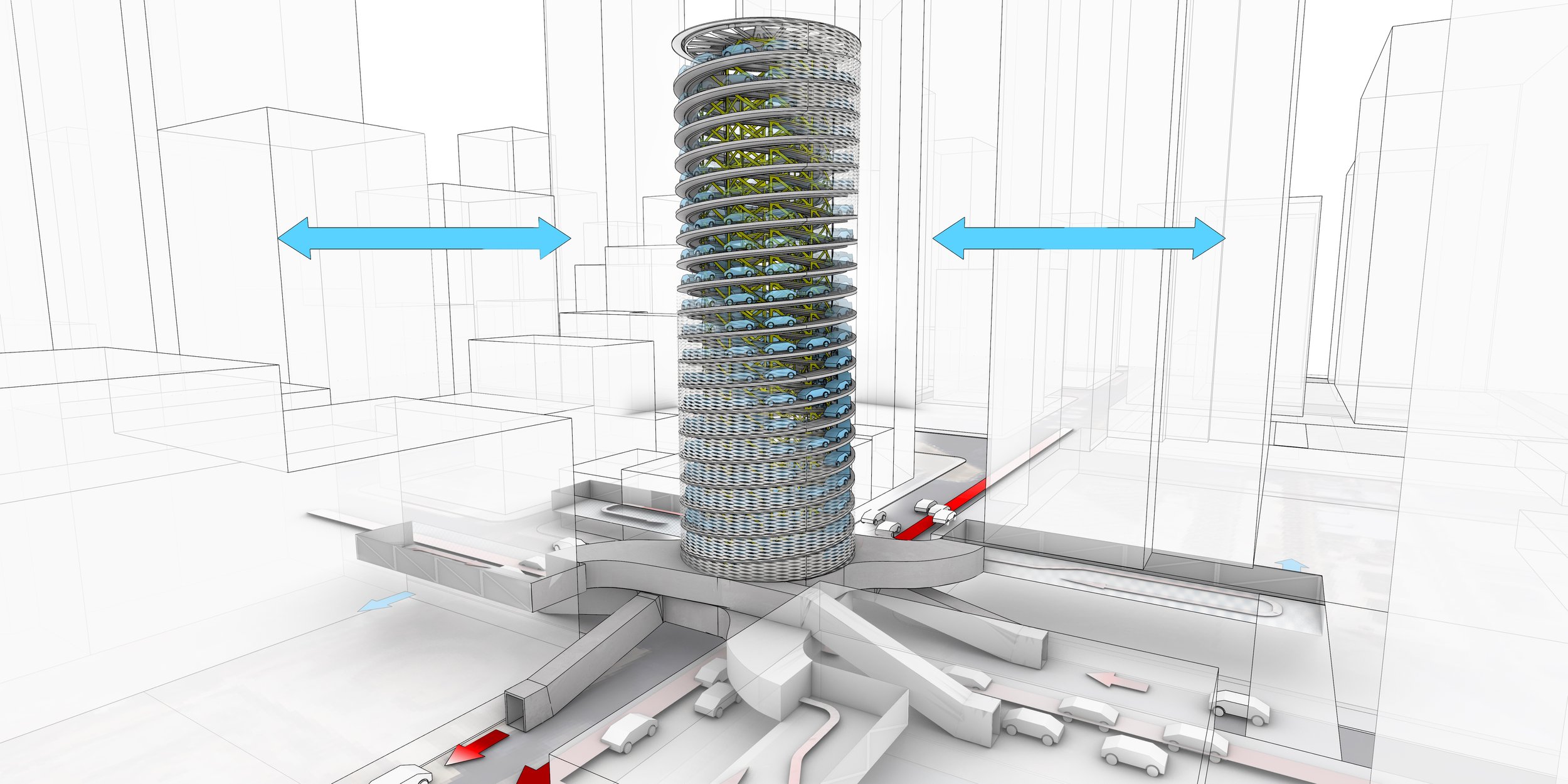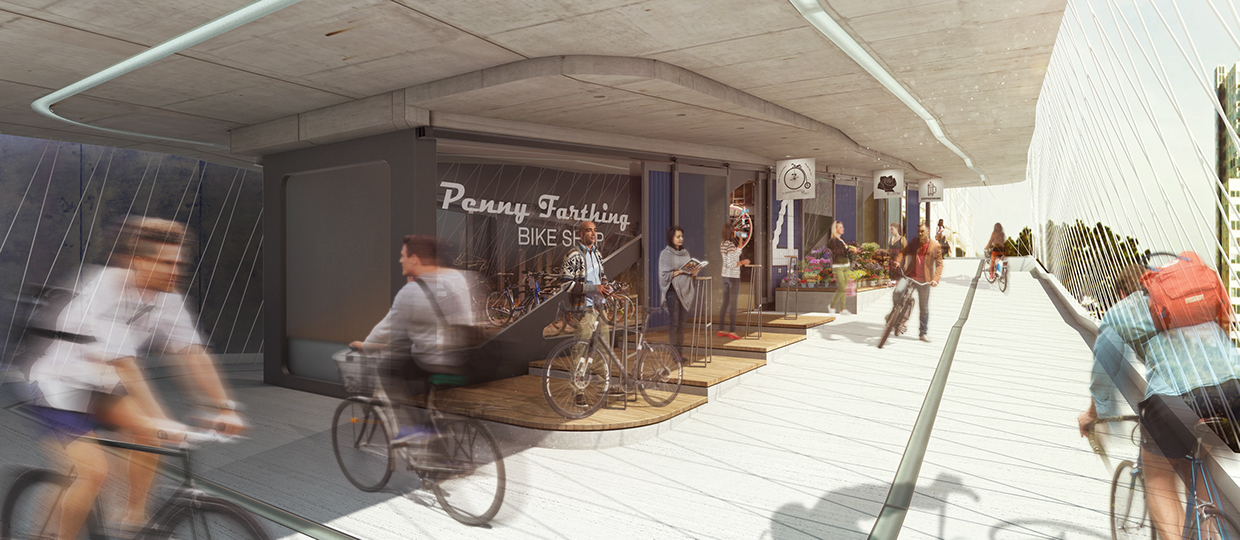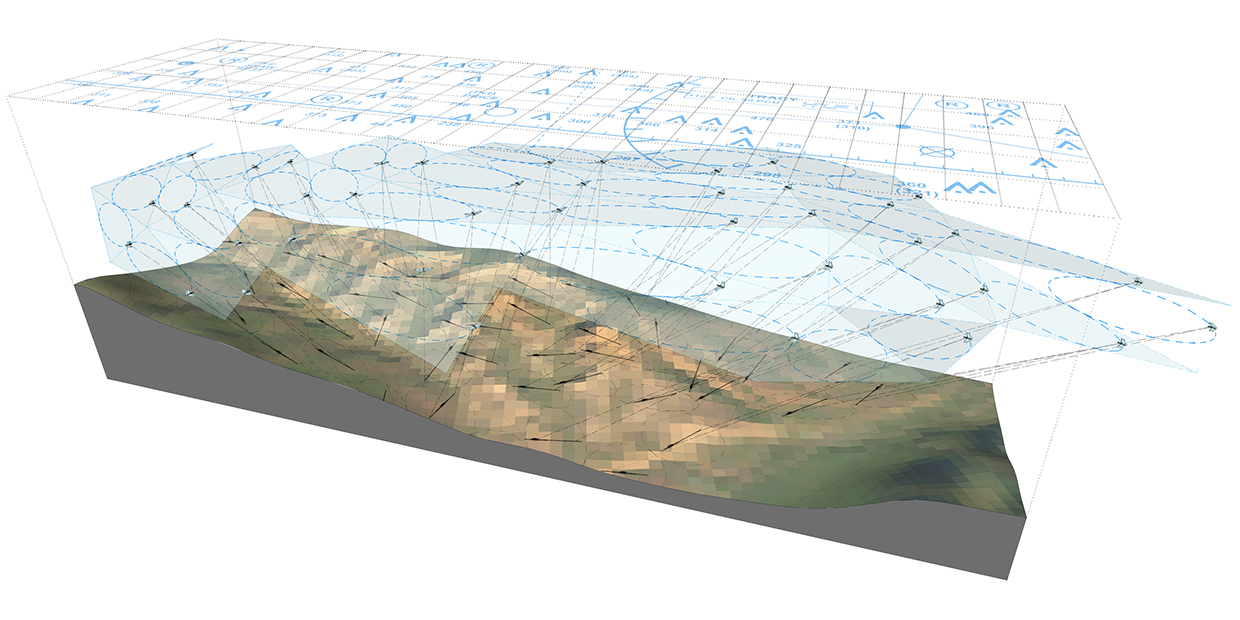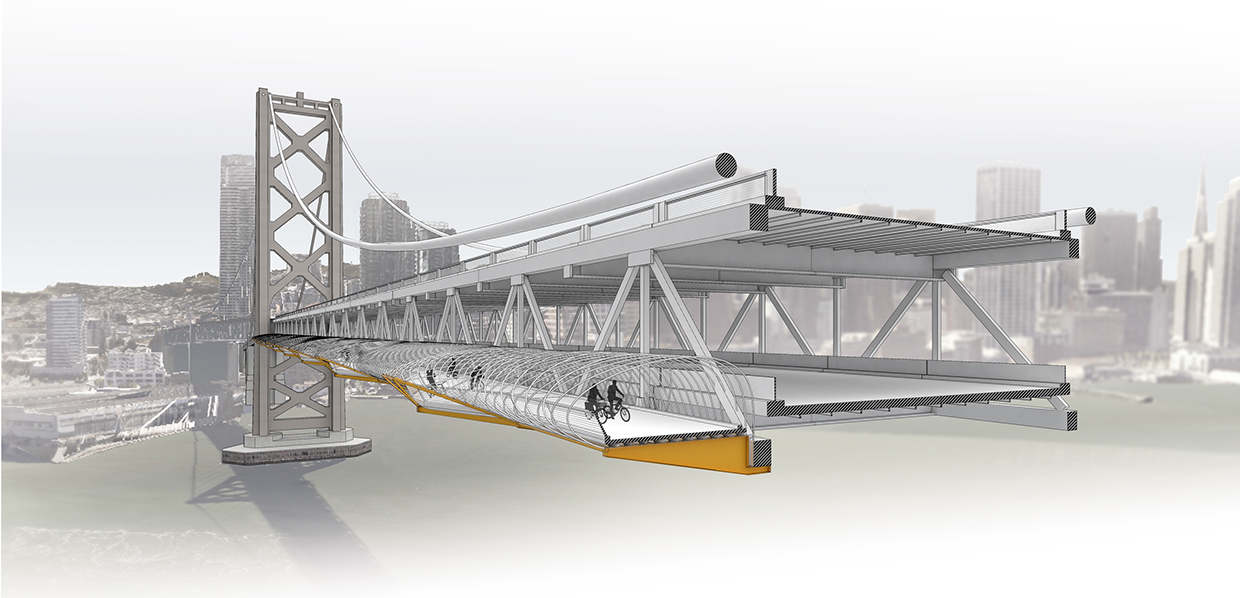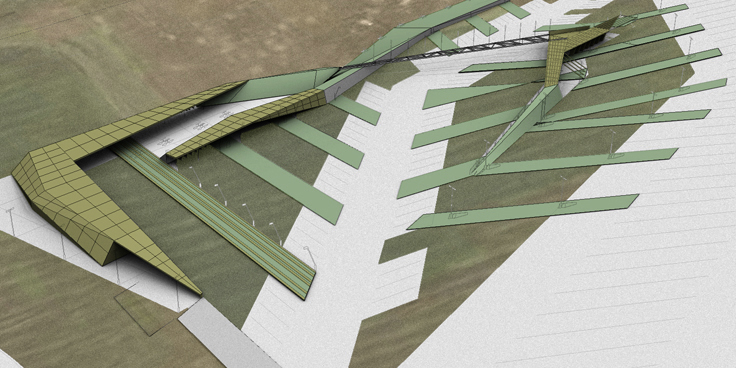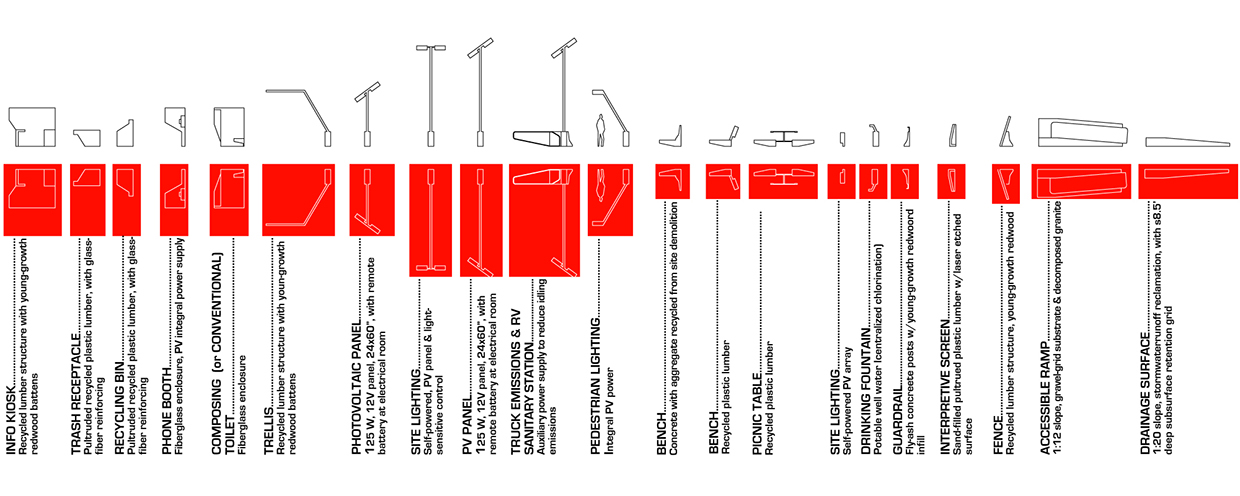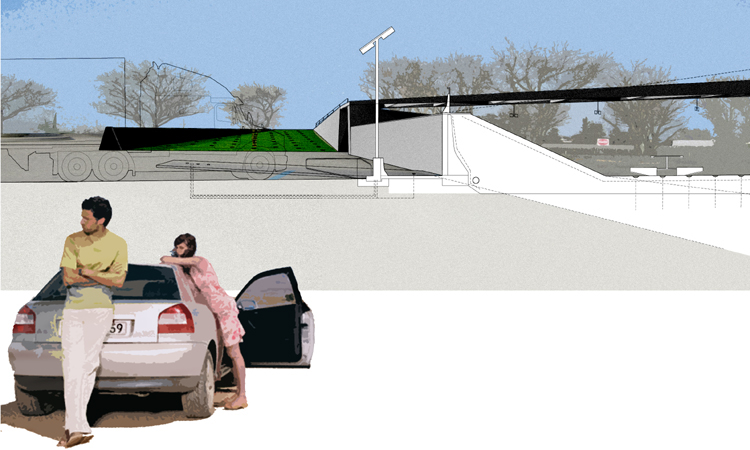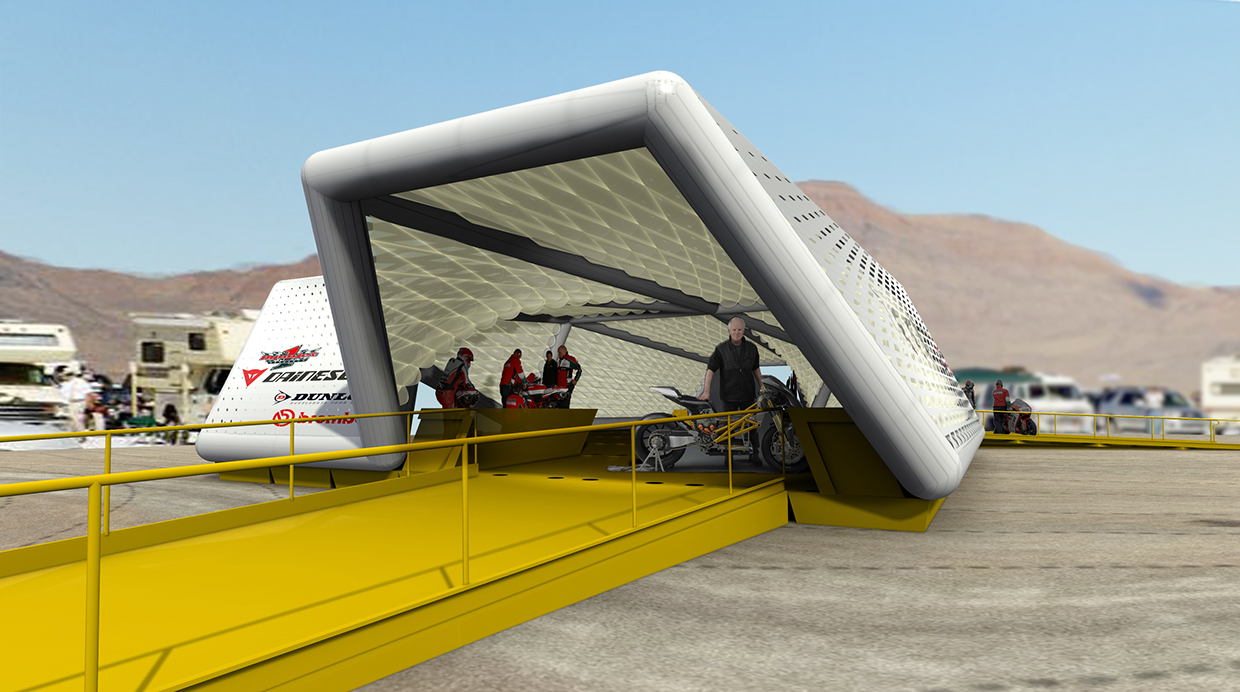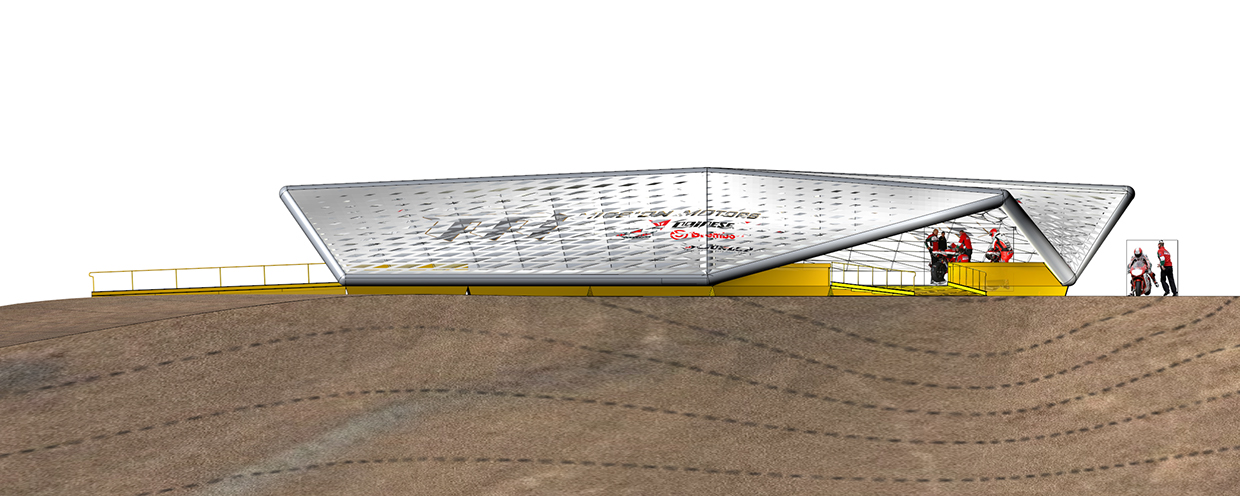RESEARCH: MOBILITY
HOW WE MOVE FUNDAMENTALLY AFFECTS HOW WE (SHOULD) BUILD.
How we move has long been one of the central defining features of the American landscape, which in turn poses some tough architectural challenges and opportunities. Every 100 years in the United States there has been a revolution in transportation technology that has precipitated widespread shifts in the building environment, with extreme and unintended consequences. Given the significance of these shifts — 1750 water wheel to industrial town, 1850 steam locomotive to settlement of the west, 1950 ICE passenger car to suburban sprawl — we need to be asking ourselves whether another is due in 2050 (we think yes), and if so, what form might that take?
Our research indicates that the current move to electrification, spurred on by climate change but also changes in behavioral patterns, is the beginning of this next critical evolutionary period, with the San Francisco Bay Area being one of the epicenters of this transformation.
We seek a more symbiotic evolution for the rapid transformations currently underway: architecture that not only adapts to but also helps to shape the future of mobility. We believe in designing for a future where transportation, technology, and sustainability converge to create a harmonious built environment that is not only functional but also future-proof. Architecture can play a vital role in addressing the challenges and opportunities presented by electrification, micromobility, autonomous vehicles, and smart cities.
At the heart of our work is a vision for hybrid spaces, where emerging forms of mobility and novel building uses seamlessly coexist and influence each other. Small scale experiments, with big scale implications.
RELATED PROJECTS
INTERMODAL HUBS
With “20-minute-city” patterns already taking root in California’s suburbs, what does this mean for local and regional transportation, particularly given a crisis of public transit? This study explores intermodal micromobility usage in satellite communities in the Bay Area.
GREENSTOP REST AREA
With electric vehicles bringing new challenges for charging, how might we reconsider spaces for vehicle downtime, and broader uses of this infrastructure beyond “rest?”
SAN FRANCISCO DEPARKING PROJECT
Given the vast urban surface area occupied by parking, can we rethink how it is distributed, used, and transformed? With San Francisco as a case study, we examine the implications of autonomous vehicles on parking, and how that can catalyze new patterns of development.

